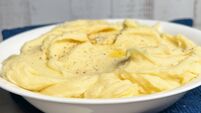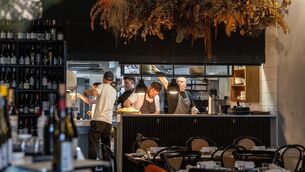Wine: Refreshing selections from Tuscany and Puglia

All this gorgeous weather has sent me to Italy in search of refreshment this past few weeks. I’ve also been dipping into southern France for rosé.
My selections this week are from Tuscany and Puglia, two regions that take pride in their wine and olive oils. Tuscany is by far the more famous of the two thanks to cities such as Siena, Florence, Lucca and Pisa, not to mention its beautiful rolling hills and its art and architecture; but let’s not forget that other wonder of the region: sangiovese.
Almost all the reds of the region employ sangiovese, named for the blood of Jove (Sanguis Jovis). Chianti is of course the best known and covers a huge area with many sub-zones but, despite vast improvements in recent decades, you do need to exercise caution at the lower end, just as you would when picking up a random AOP Bordeaux.
Given the size of Tuscany and sangiovese’s many clones it has some pseudonyms you should learn — brunello in Montalcino and morellino in Scansano in south-east Tuscany. The grape has lots of acidity and structure but is riper and sweeter in (more southerly) Morellino di Scansano and the Sangiovese Grosso clone used in Brunello di Montalcino and in Vino Nobile di Montepulciano gives denser fleshier wines while retaining that charming Tuscan lightness. Brunello and Vino Nobile are expensive, so watch for their little sisters — Rosso di Montalicino and Rosso di Montepulciano.
Puglia’s cities are not as famous but the region is equally historic with a wealth of archaeological wonders, thanks to its time as a colony of the Mycenaean Greeks. The region was also ruled by the Kingdom of Naples and for a time by Aragon, and the Turks and the Venetians also left some influences here. Puglia is a lot flatter and hotter than Tuscany and here the best grapes are negroamaro and primitivo (aka zinfandel).
Puglia’s wines used to be rather dilute and uninteresting (not unlike
many a chianti) but it has really come into its own in the 21st century with controls on yields, new DOCs, and with great value flavourful wines worth a risk at almost all price levels.
BEST VALUE UNDER €15

One of Tuscany’s lesser known DOCG regions is in the coastal hills to the southwest of the region. Morellino is the local name for sangiovese and wine from this DOCG is often underrated. This has aromas of red fruits which follow through on the palate with a subtle hit of classic Tuscan bitter cherry, balanced and fresh with fruit and acidity in harmony.

Vernaccia grapes have been grown on the hills around the ancient town of San Gimignano for at least a millennia and this was the very first declared DOC Italian wine in 1966. This has ripe aromas of fragrant candied lime and ripe gooseberry, juicy and fruity with lingering lemon peel and a pleasing freshness. The essence of summer.

Negroamaro is arguably the best red grape on the Salento peninsula in southern Puglia though it is often blended with malvasia nero and sometimes with primitivo. This is made from 100% negroamaro and has good depth with characterful red and dark fruit aromas, smoky touches and a sweet cherry fruits on the finish. Serve this a little cooler than usual.
BEST VALUE OVER €15

A fully organic vineyard in a newly restored winery (with rooms, a spa, and restaurant). This is a blend of equal parts primitivo, aglianico, merlot and cabernet sauvignon with 16 months in French oak — a gorgeously ripe mix of voluptuous silky fruits, supple and juicy with hints of spice.

Owned and run by four brothers who returned to their native Tuscany having made a few quid in other professions. This is organic and biodynamic with a bright cherry fruitiness, textured soft red fruits on the attack, and a crunchy characterful mid-palate and good acidity and freshness.

This is an old favourite and a bit of a classic — the two neighbouring wine estates of Isole and Olena merged in the 1950s but both date from the 12th century. Bright fragrant floral and cherry fruit aromas, textured and soft red fruits on the palate balanced by acidity and freshness.








